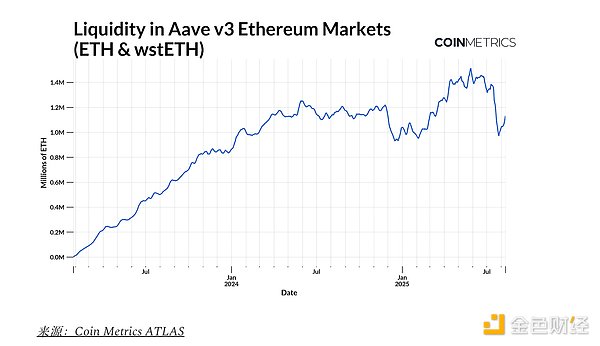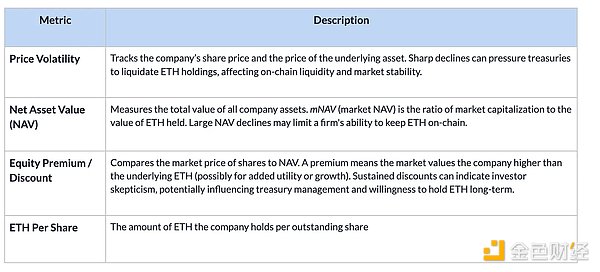BTCS Inc.: 70,000 ETH (approximately $293 million). Among these, Bitmine Immersion Technologies is currently the largest corporate ETH holder, holding 0.95% of the supply, and its holdings are rapidly approaching its publicly stated goal of holding 5% of the circulating supply. As market conditions change, these companies are rapidly building reserves at a relatively low cost, intensifying competition for acquisitions. This trend is even more pronounced when compared to Ethereum's issuance mechanism. In Ethereum's Proof-of-Stake (PoS) model, new ETH is issued to validators, while a portion of transaction fees is destroyed. Therefore, net issuance can fluctuate between deflation and inflation. Since the September 2022 "merge," Ethereum has issued 2.44 million ETH and destroyed 1.98 million ETH, resulting in a net supply increase of 454,300 ETH. Since July alone, the Ethereum Treasury has accumulated 2.2 million ETH, far exceeding the net new issuance during the same period. In contrast, Bitcoin's supply cap and halving mechanism continuously compress new supply, while Ethereum's supply is dynamic and currently inflationary. Given that ETH's market capitalization is approximately 1/4.5 of BTC's, the scale and speed of this wave of demand are particularly striking. This supply-demand imbalance is even more pronounced when considering inflows into Ethereum ETFs, which have also accelerated over the past few months. Combined, these investment vehicles are steadily absorbing ETH's circulating supply (market available supply) of 107.2 million, not including the 29% of ETH staked in the consensus layer and the 8.9% held in other smart contracts. Therefore, if the continued accumulation of treasuries and ETFs continues, it will amplify the price's sensitivity to this increased demand. While most ETH treasuries are still in the accumulation phase, some funds may eventually flow on-chain. By integrating into Ethereum's staking and DeFi infrastructure, these companies aim to increase risk-adjusted returns and effectively utilize their assets—a stark contrast to the more passive holding approach of Bitcoin treasuries. This shift has already begun, with companies like SharpLink Gaming staking a majority of its holdings, BTCS Inc. using Rocket Pool to generate revenue, and companies like The Ether Machine and ETHZilla preparing to engage in more active on-chain governance. Ethereum currently provides a nominal annualized return of 2.95% and an inflation-adjusted annualized return of 2.15% through staking rewards, which are used to secure the network. This allows the Treasury to generate stable cash flow as the underlying asset prices rise. For example, if 30% of the 2.2 million ETH currently held by a treasury company were staked at the current nominal yield of approximately 3% and a price of $4,000 per ETH, annual revenue would reach approximately $79 million. While an increase in staked funds may compress yields, the impact is relatively small because the Ethereum reward rate gradually decreases as the total stake increases. Corporate treasuries typically participate in staking in two ways: by running their own validator nodes or by using liquid staking protocols (which the US SEC has clarified are not considered securities). The second method allows companies to stake through third parties such as Lido, Coinbase, or Rocket Pool and receive tradable "liquidity certificate tokens" in return.
While these tokens (such as Lido's stETH) carry additional risks, they are widely used in DeFi as collateral for lending or to earn additional returns above the benchmark staking APY while improving capital efficiency.

Taking Aave v3 as an example, ETH and liquid staking tokens (such as wstETH) form a deep liquidity pool (the amount of assets supplied and available for lending), which currently has a scale of approximately 1.1 million ETH. The addition of the treasury can further enhance this liquidity pool, improving market liquidity while compounding returns. While the Ethereum mainnet currently sees record-breaking daily transaction volumes (1.7 million to 1.9 million transactions per day), total fees remain near multi-year lows. Recent gas limit increases and blob capacity expansions have eased congestion and shifted some activity to Layer 2. If treasury funds flow on-chain on a large scale, high-value transactions will increase overall blockspace demand and fee revenue on Ethereum's Layer 1. This could create a virtuous cycle: treasury activity → increased liquidity → increased on-chain usage → further ecosystem activity. Linking Corporate Treasury Performance to On-Chain Health: As listed ETH treasuries expand their on-chain presence, their financial performance increasingly impacts the long-term health of the Ethereum network, directly linking off-chain business results to potential on-chain effects. Large-scale, long-term holdings can reduce circulating supply, enhance credibility, and deepen on-chain liquidity. However, excessive concentration, excessive leverage, and operational risks also mean that fluctuations at the enterprise level can be transmitted to the network. While these are network-level considerations, corporate treasuries themselves are still subject to market forces and investor sentiment. Healthy balance sheets and continued investor confidence can enable treasuries to expand their holdings and increase participation. Conversely, a sharp drop in the underlying price, tightening liquidity, or excessive leverage can lead to a sell-off in ETH or a decrease in on-chain activity.
Indicators tied to treasury company performance

By simultaneously tracking network-level impacts and the financial health of these companies, market participants can better anticipate how corporate treasury actions will affect Ethereum's supply dynamics and overall network health.
Conclusion
The rapid rise of corporate ETH treasuries demonstrates the dual appeal of Ethereum as both a reserve asset and a source of on-chain income. Their growing presence may deepen liquidity and enhance network activity, but it also brings risks related to leverage, financing, and capital management. From stock price performance to debt obligations, off-chain pressures may quickly transmit to the chain as the two become increasingly interconnected. Therefore, tracking the health of balance sheets and on-chain activity will be key to understanding the impact of these institutional vehicles as they scale.
 Weatherly
Weatherly





